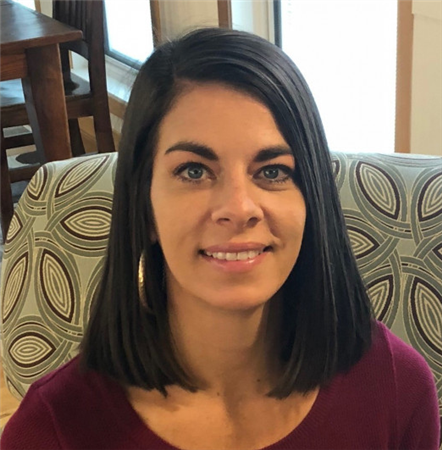Under the tag line "Where Small Voices Can Be Heard", the mission of the Child Advocacy Center is . . .
. . . to provide Lincoln, Lancaster County and Southeast Nebraska with a coordinated, team approach to the problem of child abuse.
The goals are to reduce trauma, seek justice, and foster hope and healing for children and their non-offending caregivers.
The Child Advocacy Center establishes a safe, child friendly environment for interviews and medical evaluations for the alleged child victim and offers continued support to the child and non-offending family members. We also promote specialized training for professionals as well as public education and prevention efforts.
Destiny shared how the concept of the Child Advocacy Center developed. She shared that it was started by Robert E. "Bud" Cramer who was the District Attorney in Alabama. He realized the flaws in the system - it was difficult on the victims because of the process and they got very few prosecutions. The CAC model that he developed reduced the number of steps and got professionals to work together.
What used to happen - as many as 17 different people are involved and the child keeps reliving the experience. Also, the offices and facilities where the conversations took place were not very comfortable.
Child tells teacher.
Teacher, Principal talk with the child.
School nurse examined the child.
School calls the hotline and police.
Police officer talks with child.
Hospital visit where nurse and doctor talk with child.
A detective is assigned and child goes to the police station to talk with the detective.
A Health and Human Services worker talks with the child.
A attorney talks with the child.
A counselor talks with the child.
With the CAC model, the victim only talks with 3. As well the environment is comfortable and everything takes place in one location.
Child tells teacher.
A police officer takes child to CAC.
The CAC environment is comfortable; the CAC team meets to discuss the allegation.
Child tells story to an interviewer while the other team members listen.
Child is checked by a doctor while at the CAC.
Child and parent are referred to a counselor to help with the healing.
It was easy to understand why the CAC model is more comfortable for the victim, how it can reduce trauma, and help the victim heal. The interviewers are highly trained to encourage communication without the child shutting down.
It is important that the interviewers get the information from the child without judgement or opinion and without leading the victim. There is often little physical evidence of abuse and they need to rely on the verbal answers of the victim in prosecuting the cases.
The CAC staff provide ongoing support. Destiny indicated that as cases go into the criminal system it may be up to 3 years to finalize. Their staff is available 24/7 to provide the support the victim and family may need.
Some statistics:
1225 child victims of abuse were seen in 2019
That is 5X more than were seen 20 years ago (they believe it is due to awareness and that there is somewhere to go)
76% of children suffered from sexual abuse - others were physical, mental abuse or they were in homes with drugs or recovering from a violent crime
71% of the children are under age 12.
Generally they see children from 3 to 18 (sometimes a little longer)
99% of the time the victim knows their abuser
57% of the abusers are family members - or friends, relatives of the family or other trusted friends such as coach, teacher
About 1/3 of the victims are male
Destiny showed a graph of how cases declined during COVID-19. Since most cases are reported by teachers, those stopped when the schools had to shut down. This has been a difficult time for these victims as they are shut in with nobody to tell. They suspect that the incidents have actually increased as kids are usually the ones that get abused during stressful times.
Destiny Burkett serves as the Development Director at the Child Advocacy Center. She is responsible for overseeing and performing all fundraising activities, including: donor development, grant writing, corporate outreach, special events, and all print and digital marketing and advertising. Prior to the Child Advocacy Center, Destiny served as a Technical Writer at Union Bank & Trust for 13 years where her work was focused on providing standardized documentation for both end user manuals and internal processes and procedures. Destiny has a Bachelor of Science in Forensic Science from Columbia College in Columbia, MO and a Masters of Forensic Science from Nebraska Wesleyan University. Destiny and her husband, Rob, have two children: Brinly (9) and Bryson (6),
